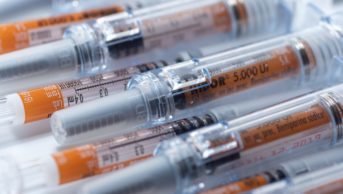
Source: Dr P Marazzi / Science Photo Library
Complications from deep-vein thrombosis (DVT), known as post-thrombotic syndrome, occur in around half of all patients, despite the use of anticoagulant therapy. Recent studies have indicated that pharmacomechanical thrombolysis could reduce the risk.
In a study in The New England Journal of Medicine (7 December 2017), researchers randomly assigned 692 patients with acute proximal DVT to anticoagulation alone or anticoagulation plus pharmacomechanical thrombolysis[1]
. This involved delivery of recombinant tissue plasminogen activator directly into the thrombus, followed by aspiration, with or without stenting.
Between 6 and 24 months, there was no significant difference in the rate of post-thrombotic syndrome between the control and pharmacomechanical thrombolysis groups, at 48% and 47%, respectively. But those undergoing pharmacomechanical thrombolysis had more major bleeding events in the first 10 days (1.7% vs 0.3%).
The researchers said the findings indicated that the limited benefits of pharmacomechanical thrombolysis do not justify the risks. Further analysis will determine if particular subgroups of patients may have achieved benefit from the treatment.
References
[1] Vedantham S, Goldhaber S, Julian J et al. Pharmacomechanical catheter-directed thrombolysis for deep-vein thrombosis. N Engl J Med 2017; 377:2240–2252. doi: 10.1056/NEJMoa1615066
You may also be interested in

Pharmacists made 150,000 patient interventions during anticoagulant safety audits, report finds

Some patients switched to edoxaban without being properly informed, pharmacists say
